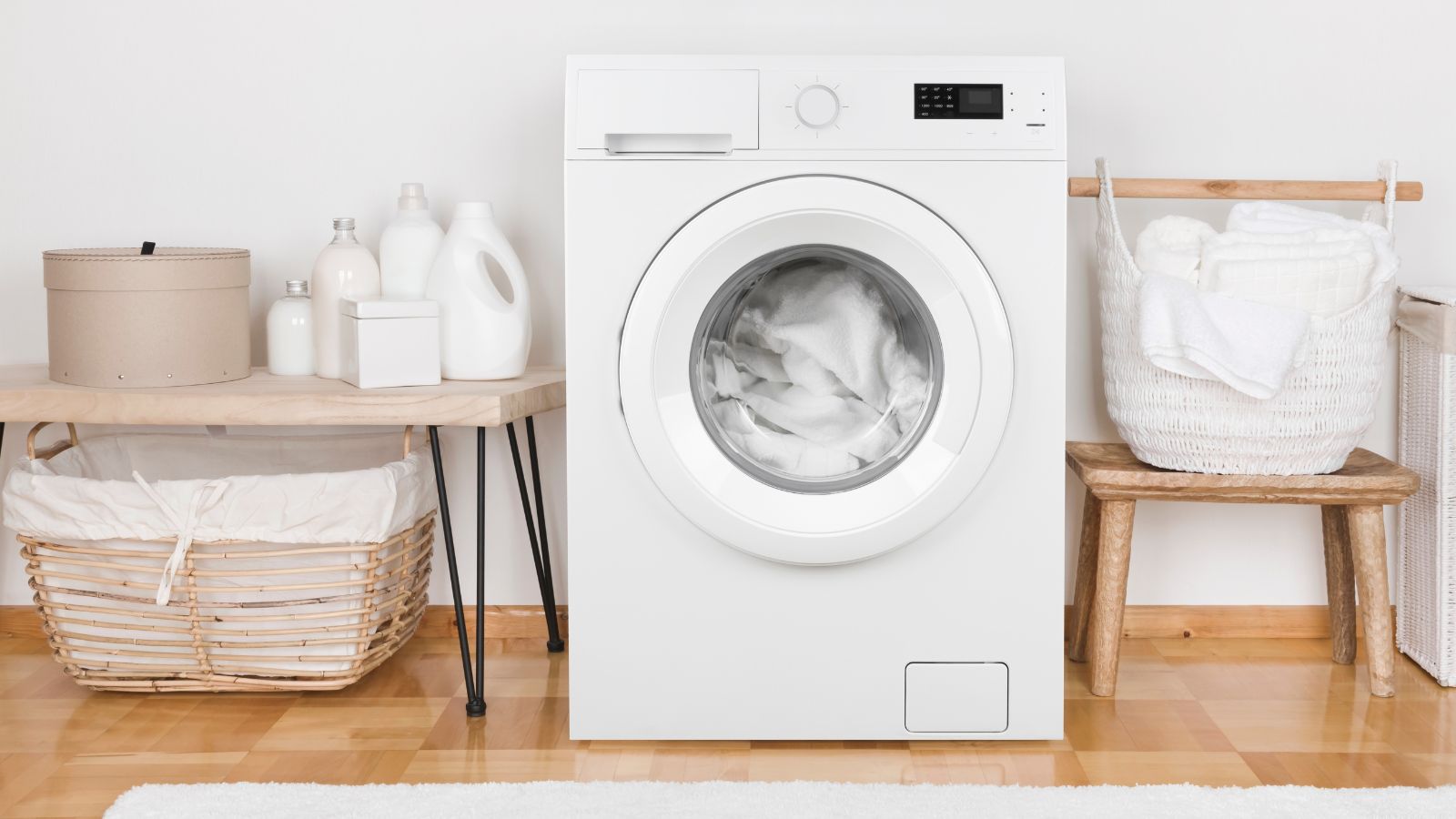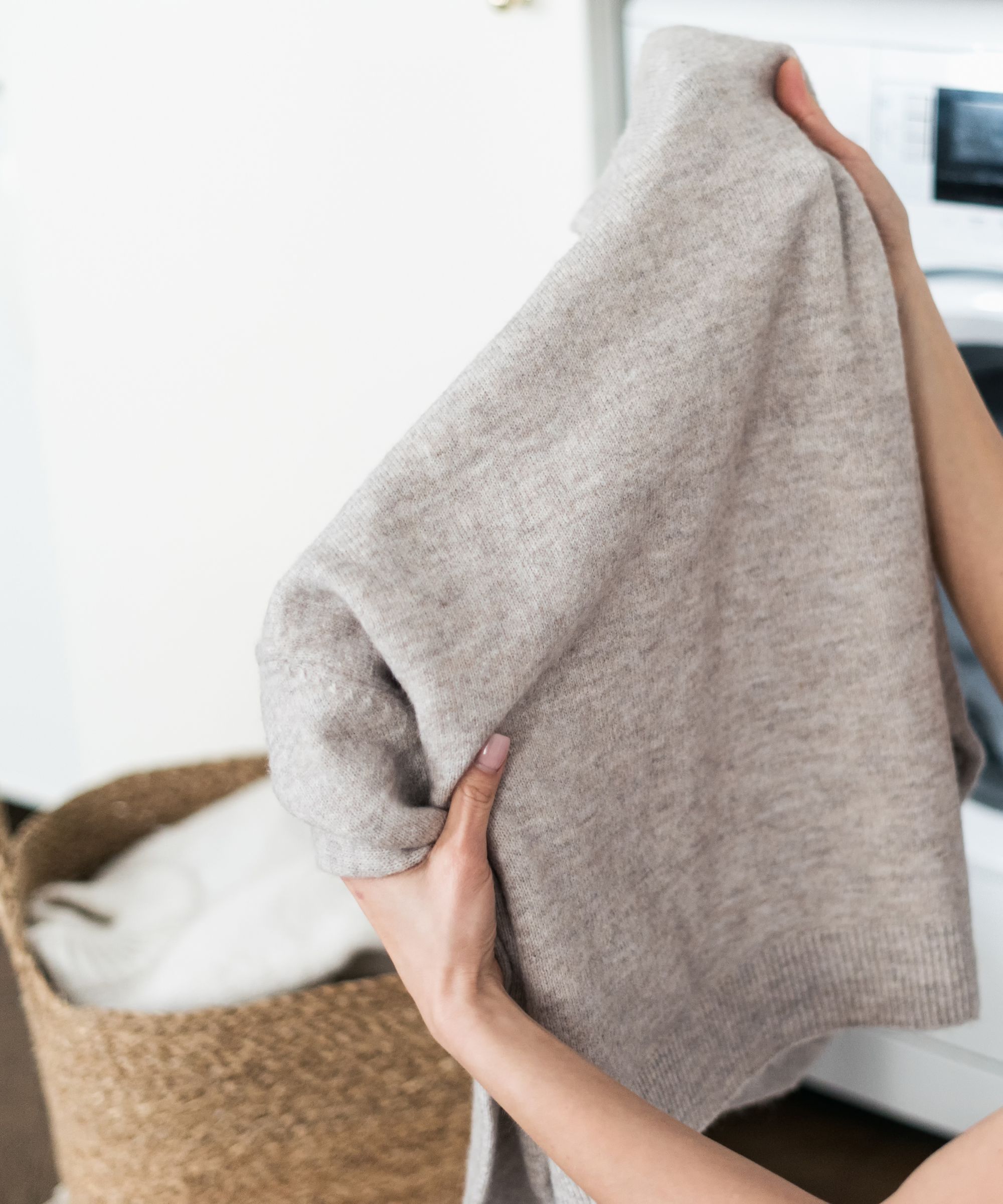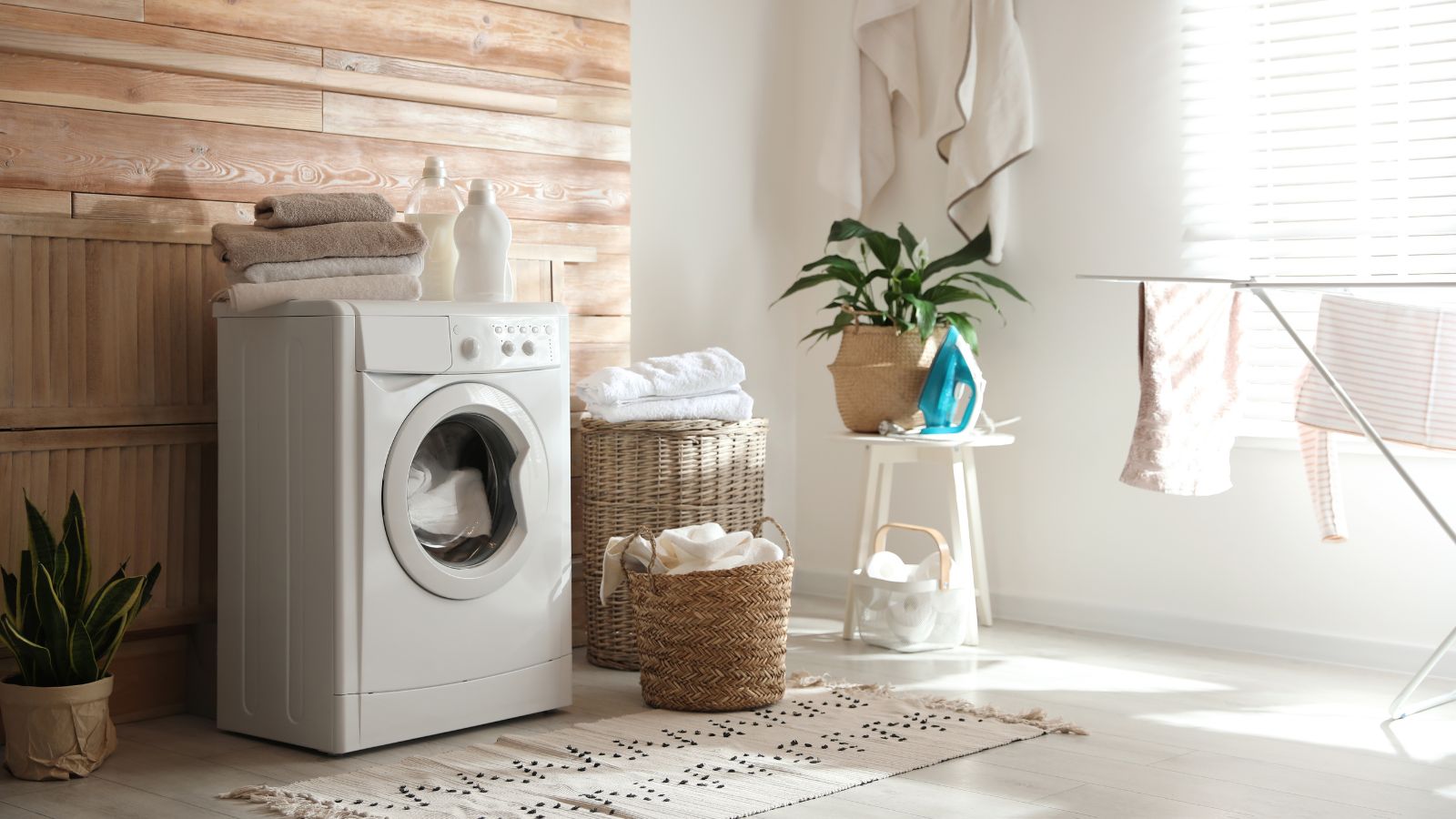What is the delicate setting on a washing machine? Laundry experts explain how and when to use it
It turns out using it does does make a difference to results, experts say


When caring for your clothes and linens, understanding your washing machine’s settings is key – with the delicate setting one of the most underutilized settings on the appliance.
Whether you are washing silk, lace, or wool, this essential setting helps to protect fabrics from excessive wear and tear. But how is it any different to any other setting on the appliance? And why is it so important?
Here, laundry experts explain what the delicate washing machine setting is, how and when to use it, and how it works to help extend the life of your wardrobe and linens.
What is the delicate setting on a washing machine?
Much like the delicate setting on a tumble dryer, the delicate setting on a washing machine is a cycle program designed to limit agitation, slow spin cycles, and minimize heat when doing laundry to help make caring for delicate fabrics such as washing wool and washing silk sheets easier without risking damage.
It might also be called the 'gentle' cycle depending on the make and model of your washing machine.

Salvador Villarreal, dry cleaning pro at VIP Cleaners Delivery, explains further, ‘The delicate cycle on a washer uses a slower, gentler agitation and spin speed for fragile clothes. I recommend it for lingerie, sweaters, and custom garments. It makes a big difference – the normal cycle can stretch, shrink, or tear these items. The delicate option extends their lifespan.’

Woolite delicate laundry detergent is frequently recommended by the laundry experts I work with. It is safe for most delicate materials such as wool and silk, and can be used at all temperatures, even in energy efficient washing machines.
This setting might seem like the perfect safe option for all of your clothing and household linens given that it is designed to protect fibers. However, Vincent Lau, president and CEO of luxury menswear brand Westwood Hart, warns against relying solely on this setting every laundry day.
‘Heavily soiled clothes, thick cotton items, and linens require more aggressive washing methods to achieve proper cleanliness,’ he explains. ‘For these items, a regular wash cycle or even a heavy-duty setting may be more appropriate. Pre-treating stains is also recommended, as the gentle nature of the delicate cycle may not effectively remove stubborn marks.’

Chlorine-free, color-safe laundry spot stain remover is safe to use on your family’s machine-washable t-shirts, sheets, towels, baby clothes, plus furniture upholstery, and soft and hard surfaces in your kitchen and bathroom.
Just because delicate laundry cycles limit the risk of damage doesn't mean you can skip separating your laundry, adds Polya Petrova, a cleaning professional at Fantastic Services. ‘Natural fibres like cotton, wool, or silk often have different washing requirements compared to synthetic fibers like polyester or nylon. Washing them together can lead to damage or shrinkage of the natural fibers or can cause static cling. To avoid damaging your delicate clothes, wash them separately from items with rough textures.’
Polya adds that ‘The care label and laundry symbols are there for a reason – they provide the manufacturer’s recommendations on how to wash, dry, and iron the fabric. Ignoring these instructions can result in shrinking, color fading, or fabric damage, so always check the care label before washing colored clothes.’
When considering whether or not a garment should be washed using a delicate or gentle setting, look out for a washtub basin with two lines beneath it on the care tag.

The icon on the far right depicts the laundry symbol that indicates a delicate cycle is best
Using the delicate setting on a washing machine correctly is a simple way to protect your fragile items from damage. While it is not a replacement for hand-washing laundry, it is a convenient alternative for those items that need a little extra gentle care.
Sign up to the Homes & Gardens newsletter
Design expertise in your inbox – from inspiring decorating ideas and beautiful celebrity homes to practical gardening advice and shopping round-ups.

Chiana has been at Homes & Gardens for two years and is our resident 'queen' of non-toxic living. She spends most of her time producing content for the Solved section of the website, helping readers get the most out of their homes through clever decluttering, cleaning, and tidying tips. She was named one of Fixr's top home improvement journalists in 2024.
-
 Experts swear by this lazy composting method – it's the most low-maintenance way to make nutrient-rich growing matter
Experts swear by this lazy composting method – it's the most low-maintenance way to make nutrient-rich growing matterMinimal time and effort is required to make compost passively
By Tenielle Jordison
-
 6 ways to decorate a windowless room, according to interior designers who have tackled the challenge
6 ways to decorate a windowless room, according to interior designers who have tackled the challengeA windowless room is undeniably a hard room to decorate, but with these beautiful examples and expert tips, you'll be inspired to look at your space in a new light
By Udita Choudhary
-
 My cheap dehumidifier makes easy work of air drying laundry indoors despite the humidity of spring showers – get yours on sale for just $49 now
My cheap dehumidifier makes easy work of air drying laundry indoors despite the humidity of spring showers – get yours on sale for just $49 nowIt's useful for lots of things around my home
By Punteha van Terheyden
-
 Looking for a natural laundry-softening alternative? I'm a professional cleaner and it's time to ditch synthetic ones for 5 non-toxic softeners that work
Looking for a natural laundry-softening alternative? I'm a professional cleaner and it's time to ditch synthetic ones for 5 non-toxic softeners that workRefresh your laundry routine with these fabric softener alternatives
By Karina Toner
-
 Unlock the magical mold-killing and stain-busting superpower of this humble household ingredient that costs just 50 cents
Unlock the magical mold-killing and stain-busting superpower of this humble household ingredient that costs just 50 centsIf you have aspirin in the house, you can use it to banish mold
By Ottilie Blackhall
-
 5 warning signs you're using the wrong amount of detergent – avoid greasy residue, stiff fabrics and skin issues with these simple cleaner-approved tips
5 warning signs you're using the wrong amount of detergent – avoid greasy residue, stiff fabrics and skin issues with these simple cleaner-approved tipsPlus, why it's important to get the amount just right
By Ottilie Blackhall
-
 Laundry experts reveal 7 unexpected washing rules you can throw out the window – from separating fabrics to mixing whites and colors
Laundry experts reveal 7 unexpected washing rules you can throw out the window – from separating fabrics to mixing whites and colorsForget everything you thought you knew
By Ottilie Blackhall
-
 Using this button on your washing machine will cut your bills and help the planet
Using this button on your washing machine will cut your bills and help the planetA single switch can make a load of difference
By Chiana Dickson
-
 Experts reveal the 5 toxic items lurking in your laundry room – and what to swap them with for a healthier routine
Experts reveal the 5 toxic items lurking in your laundry room – and what to swap them with for a healthier routineFor a room focused on cleaning, some of its items can be surprisingly toxic
By Chiana Dickson
-
 7 laundry hacks experts swear by to make this endless chore simpler, cheaper and less taxing
7 laundry hacks experts swear by to make this endless chore simpler, cheaper and less taxingFrom laundry heroes worth the spend, to tweaking temperatures and beyond
By Chiana Dickson